Andrew Jefford, the wine man we quoted at the beginning, points to northern Italy for great reds that are better value than the wines of Bordeaux. Piedmonte is the place, Andrew tells us as he sings the praises of wines like a 2010 Monfortino of Giacomo Conterno Barolo and a 2011 Cascina Francia. All of this sounds promising until we realise that the man who says money is contaminating great wines is recommending reds with price tags of $500 and $300 respectively.
Cheaper than first growth Bordeaux? By a fair margin. Within reach of ordinary mortals? Hardly. We’ll come back to Italy and its great reds, which are starting to rival great Bordeaux for price and prestige. There are plenty of good Italians to be had at more reasonable prices, but let’s start a bit further north.
Alsace and Germany
‘In this discipline [dry Riesling], this estate [Dr Bürklin-Wolff] has essentially no rival in all of Germany. In fact, given their sheer vineyard potential – they’re capable of producing seven grand crus and an equal number of premier crus in any given vintage – this may well be the best and most consistent producer of great dry Riesling in the world.’ Joel B. Payne, Vinous, January 2013.
This is not the place to go into the minutiae of German wine classification, so here are a couple of resources that make it easier to understand German wine: A very short version, and a longer one.
For a long time the Pfalz [the Rhineland Palatinate in English] was a prime source of cheap and cheerful German wine, with much of it sold for a few dollars in 1 litre bottles. Rieslings from the Rheingau and the Mosel dominated the high ground. Eventually a new generation of winemakers saw that they had something other vignerons in Germany were always struggling to get enough of: sunshine. Just across the border to the south lies Alsace, which enjoys the same climate.
These days many high-quality wines are made here, including Pinot Noirs. Sadly, we don’t see many of these wines down under. Even Dr Bürklin-Wolff’s wines aren’t easy to find. Christmann is another estate that makes great wines in the Pfalz. More resources: the short one, and the longer one.

Dr Burklin-Wolf Riesling Trocken 2015 – $25 at Langtons. It’s their basic wine, but a good example of dry Riesling from the Pfalz
Christmann Estate Riesling 2016 – $30 at Winestar. Christmann is a winery that is rapidly building a strong reputation for quality dry Rieslings
Dry white wines are much more common now than they used to be in Germany, but the top wines are still made for sweet seduction.
Dr. H. Thanisch ‘Berncasteler Doctor’ Riesling Spatlese 2017 – $60 at Worldwine. Thanish is one of the top producers on the Mosel
Dr Loosen Urziger Wurzgarten Riesling Auslese 2016 – $60 at Nicks. Ernie Loosen is a character, and a great ambassador for Riesling across the world. He also makes some pretty good wines on his estate on the Mosel
Dr Loosen Beerenauslese Riesling 2013 (375ml) – $68 at United Cellars. Made from shrivelled-up berries, these wines are sweet but much more delicate than Sauternes or Noble 1 from de Bortoli
Joh. Jos Prüm ‘Graacher Himmelreich’ Riesling Auslese 2015 – $100 at United Cellars. It’s expensive but Prüm is the biggest name on the Mosel, and this is one of the top vineyards.
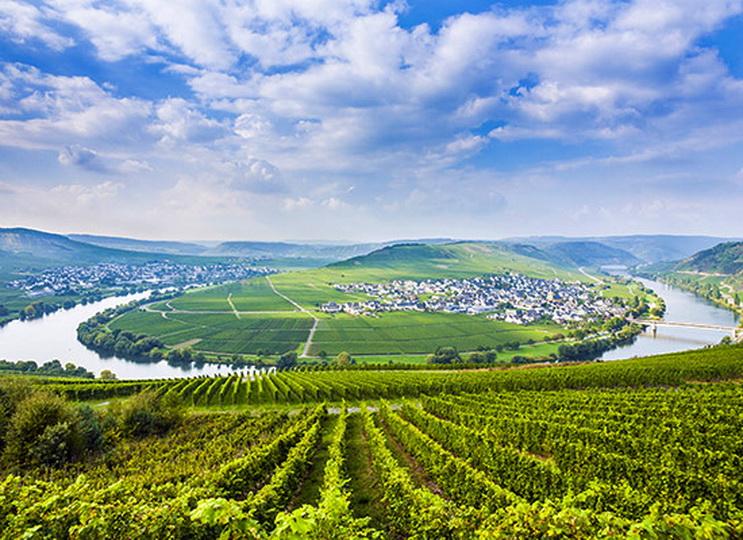
Alsace is perhaps an easier place to make sense of. We’ve included it here since it has more in common with Germany winewise than the rest of France. However, Grand Cru wines come from specified sites as in the rest of France.
Jean-Luc Mader Riesling 2015 – $30 at WorldWine. I bought a 6-pack of this gorgeous wine, not nearly enough. It’s classic Alsace Riesling from a warm vintage: rich enough and big enough to stand up to goose or duck, seductive, soft and round. A glorious summer’s day in a glass.
Jean-Luc Mader Gewurztraminer 2015 – $30 at Nicks. A small producer of great wines, and this variety is a specialty of the region.
Dopff Au Moulin Riesling Grand Cru Schoenenbourg 2014 (check the vintage) $38 at Dan M’s. Usually a great Riesling at a decent price
Albert Mann Gewurztraminer 2015 – $40 at Worldwine. Another small producer of quality wines
Jean Luc-Mader Rosacker Riesling Grand Cru 2014 – $50 at Winesquare. A wine from one of the finest sites in Alsace.
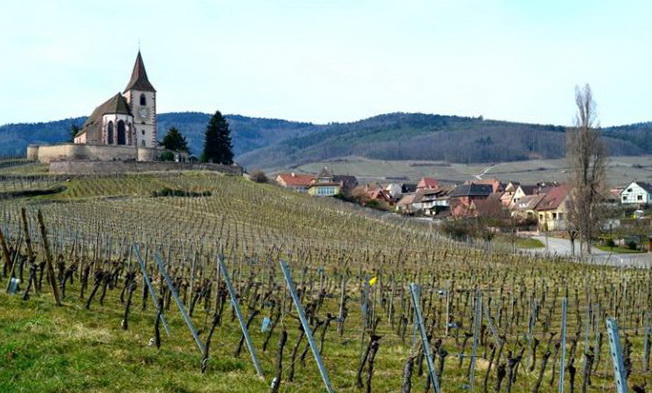
Jean-Luc Mader’s vineyards at Hunawihr
Italy
There are two countries that instill fear in the hearts and minds of Master Sommelier students, says Tim Gaiser, ‘countries that can cause panic in even the most confident candidate: Italy and Germany.’ Why put Italy on the same level as Germany? ‘Italy … is a pastiche of 20 small countries with over a thousand registered grapes (most of which you’ve never heard of) and home to over 900,000-plus vineyards.’
At the top end, it’s a little less crowded: Italy’s most famous wines come mostly from 2 areas: Tuscany and Piedmont, and from big names such Antinori, Incisa and Gaja. The last of these lifted the great wines of Barolo and Barbaresco to new heights, both in terms of quality and profile. In Tuscany, a few brave winemakers took a different turn: they broke the stranglehold of Italy’s DOC regulations, which demanded that the region’s red wines were made from Sangiovese.
Tuscany
Making wines from Cabernet and Merlot aged in new small oak was a radical departure that created a new class of Super Tuscans, which for years had to labeled as Vino da Tavola, the lowliest level in the DOC system. The biggest of these are Tignanello, Solara, Sassicaia, Ornellaia and Masseto. These days they sell for $500 to $1000 a bottle, and are said to be on the same level as the best Bordeaux reds. Their make-up is much the same as well. Not a rewarding hunting ground for us then.
Tuscan reds such as Chianto Classio and Brunello di Montalcino, made primarily from Sangiovese, taste of red fruits like sour cherries and are aged in old barrels, while the new brigade showcases cassis and blackberries wrapped in pencil shavings oak. Here are some examples:
Banfi Brunello di Montalcino DOCG 2012 – $79 at Wine House. Wine Spectator says: ‘A textbook Brunello, mingling cherry and berry fruit with bitter almond, iron, sanguine and tobacco notes. Well-structured and harmonious, this should rein in the tannins with a few years of aging. Best from 2020 through 2033.’
Talenti Brunello di Montalcino 2013 – $115 at Prince Wine Store. 2013 is more classic vintage for Brunello, with fresh fruit, elegance and good acid balance, whereas 2012 was a hot year that produced bigger, riper wines.
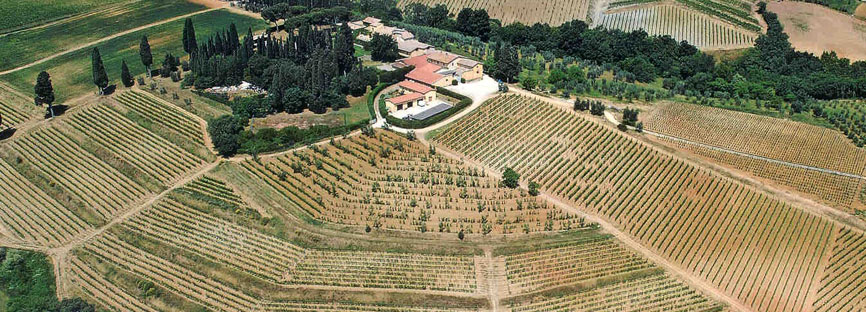
The famous Biondi-Santi Vineyard in Tuscany
Chianti Classico
Chianti reds offer better value than Brunello, as a rule. That’s because Brunello has built a huge reputation for itself, especially in the USA (where 70% of Brunello is sold), and because Chianti evokes memories of straw-covered bottles of cheap and not always cheerful plonk.
We’re still in Tuscany, just outside the 10,000 hectares of the famous Brunello denomination. Chianti Classico is defined in the DOCG regulations. It must be made of 80% of Sangiovese, the remainder can be Canaiolo and Colorino, as well as Cabernet Sauvignon and Merlot.
Principe Corsini Le Corti Chianti Classico 2015 – $35 at Nicks. The nose is immediately decadent and subtle at the same time with notes of leather, brambleberries, cedar, forest floor and tobacco. A very intense Chianti Classico that shows chewy, structured tannins, a nice supporting backbone of acidity and a long, spicy finish. From organically grown grapes. Drink now or hold. 93 points, James Suckling.
Mazzei Fonterutoli Chianti Classico 2015 – $38 at Nicks. ‘A pure streak of raspberry and peony marks this elegant red, with accents of black pepper, earth, graphite and tobacco. Firm, stretching out on the finish, showing echoes of fruit, earth and mineral. Best from 2019 through 2033.’ Wine Spectator.
Fontodi Chianti Classico 2015 – $75 at Prince Wine Store. ‘The purity of fruit here really makes an impression on you. The nose shines with freshly picked blackcurrants, dark plums, freshly cut herbs, cinnamon, raspberry cheesecake, glazed cherries, orange and lemon rind. The palate is so well-crafted with a silky ball of tannins surrounded by layers of blue and red fruit and enveloping acidity. A long finish. From organically grown grapes. Drink now or hold.’ (95) James Suckling
Piedmont
The reds of Barolo and Barbaresco in Piedmont are a different breed: they’re made from Nebbiolo grapes, and Barolo tends to be a tough, tannic wine in its youth while Barbaresco is more user-friendly. Both have unique nose that mixes roses, tar, truffles, wood smoke and and violets. They mature into reds that resemble great old Hunter reds with tarry, leathery and earthy characters coming into play. Like our Grange, great Barolos will improve in the bottle for decades.
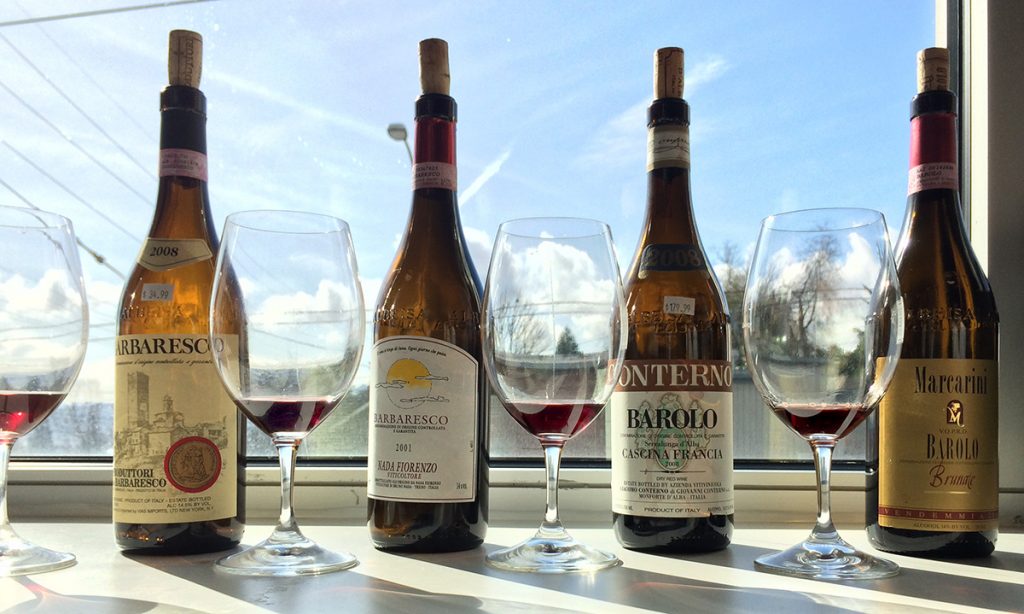
image credit: The Wine Folly
These are great food wines to go with the hearty cuisine of the Langhe region just south of Turin, close to France in the west, and the Mediterranean to the south. Barolo and Barbaresco are classified areas within the Langhe region. Barbaresco used to be more affordable, but these days the Langhe denomination is the place for value. Andrew Jefford gives us more insight on the differences. Here are a few examples:
Roberto Sarotto Barbaresco Riserva DOCG 2013 – $45 at My Wineguy.
Produttori del Barbaresco DOCG 2014 – $70 at Winestar.
ArnaldoRivera Undicicomuni, Barolo 2013 – $75 at Langtons
Luigi Einaudi Barolo Terlo 2013 – $90 at Boccaccio. ‘Love the decadent, sweet-tobacco, stem and ripe-fruit aromas to this one. Full-bodied, layered and soft with ripe tannins and so much subtle fruit. Sexy is the only word to describe it. Drink in 2020.’ 94 Points. James Suckling
If these prices take your breath away, the next option may help.
Vajra Langhe Rosso 2016 – $30 at Winestar. Gets a great wrap and 94 points from Gary at the Winefront. ‘What a little ripper! Cherry, strawberry, almond, new leather, and spice, aniseed too. It’s fresh and juicy, bursting with cherries and spice, but a little bit savoury too, with suede tannin, bright strawberry acidity, and a slightly sticky finish of excellent length. Pleasure packed regionality, perfectly executed. Alcohol: 13.5%.’
Italy makes lots of white wines, but none lay claim to being as grand as the top reds. The best known are Soave and Orvieto, the least known are the white wines of Fruili-Venezia-Guilia. This region sits between the Alps and the Mediterranean between Venice and Slovenia. Many say that it produces Italy’s best white wines in the modern style from modern varieties. Sadly, I can’t find anyone who imports them, but I’ve found a couple of wines that contrast the old and the new.
Pieropan Soave Classico DOC ‘La Rocca’ 2016 – $64 at World Wine. A dense and layered white with sliced-apple, pineapple and honey character. Medium to full body, hot stones, bright fruit and a long and flavorful finish. So many peach and lemon undertones. A gorgeous wine. James Suckling
Roberto Sarotto Puro Chardonnay 2014 – $32 at Winesquare. Sarotto is another rebel who makes Chardonnay in Piedmont where there’s no classification for it, or role models. These are big, rich, complex old-style Chardonnay.
Roberto Sarotto Puro Chardonnay 2015 – $43 at cloudwine. Wine authority Luca Maroni gives the wine 99 points and tells us that this is the best white wine in Italy.
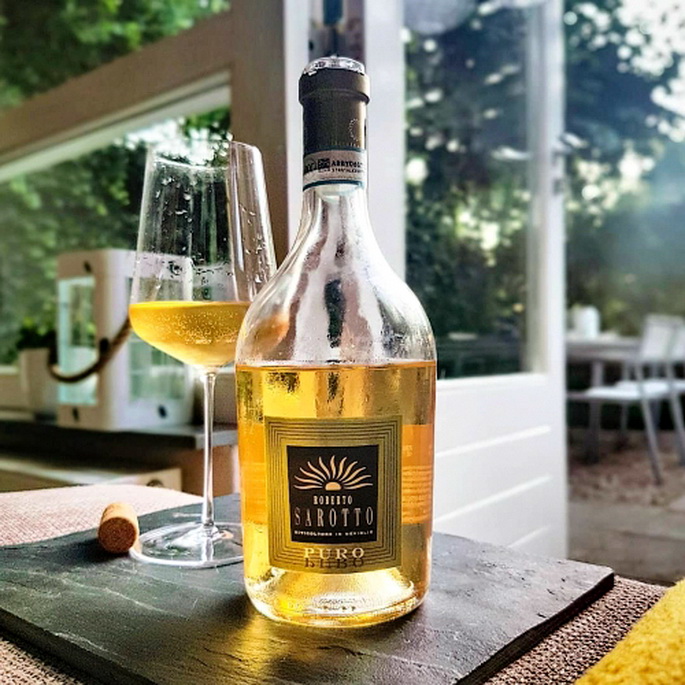
More Reading
The Pfalz – Fabulous destination for wine lovers and foodies
Guide to Alsace Wine – from the Wine Folly. ‘Learn the most important facts about Alsace including its major wine grapes and blends. Check out a map of the region and some amazing photos of what it’s like to be there.’
Italy’s Barolo and Barbaresco wines are putting French Burgundy to shame
Barolo, Barbaresco, and the “Other” Nebbiolos of Italy – from the Wine Folly
Map of Italian Wine Regions – same source
